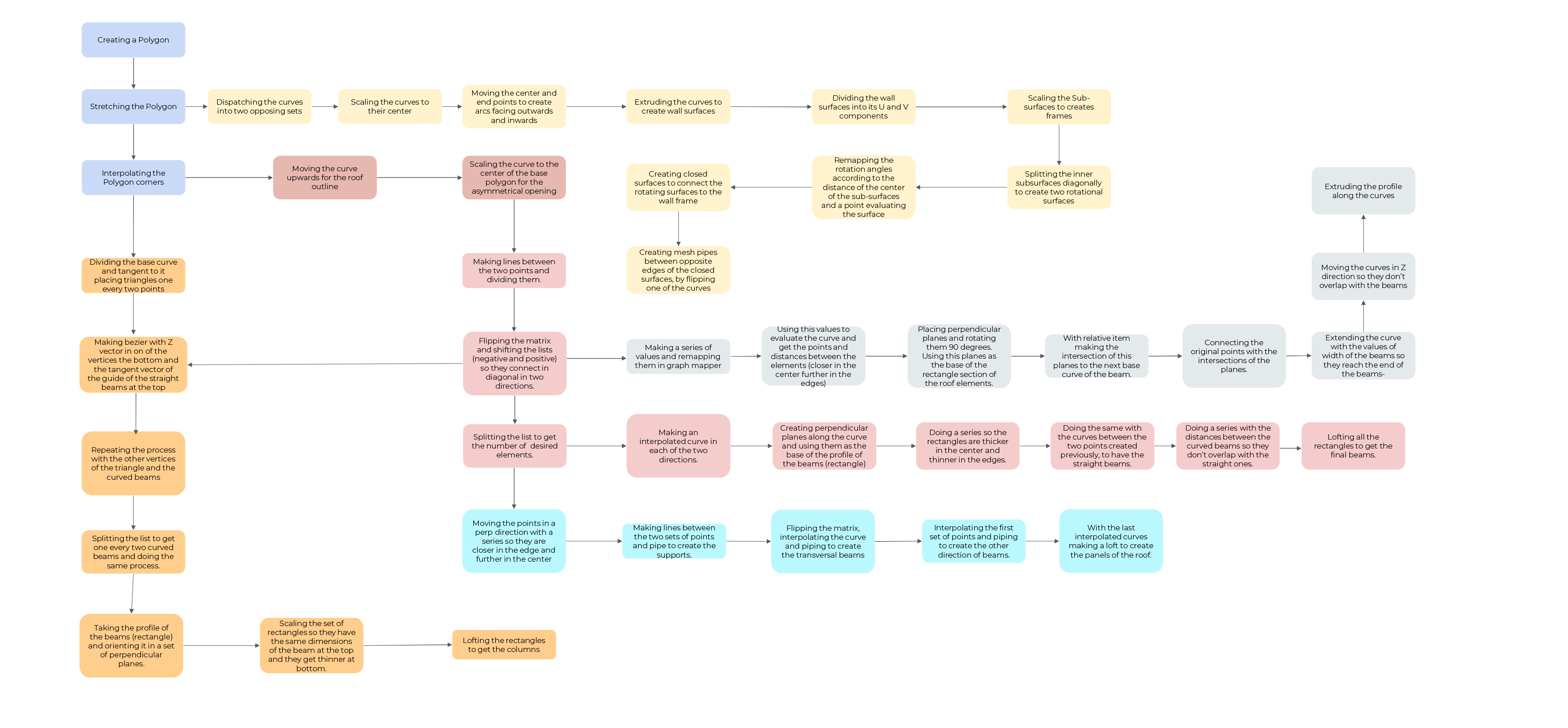Design Analysis & Concept
As the project brief required to reimagine the Serpentine Pavilion by Francis Kere, built in 2017 at the Serpentine Gallery in London, UK, the pavilion was deconstructed and analyzed into 3 of its major elements; the roof, the roof structure and the envelope.
The main idea for the reimagination of the pavilion was to retain the original elements but play with their base geometries. Hence, the new pavilion shall still consist of the same 3 major elements yet in the reimagined design, each and every element was aimed to be parametrically adaptable.
The base of the design consists of a base polygon which varies parametrically, which in turn varies the number of walls and access points to the pavilion and which then results in the variation of the structure of the roof. Similar to the original pavilion these walls are separated into opposing sets of walls, with one set facing inwards and the other facing outwards.
The diagrams below show the parametrically adapted base polygons, the interpolated curves through their corner points which make up the base geometry the define the basis for the different sets of walls;
Design Details
The parametric adaptability of the pavilion based on the base curve of the polygon extends to the entire complexity of the roof structure, the roof shape, the number of walls and the shape of the envelope, providing endless possibilities to explore multiple structural and aesthetic resolutions for the Serpentine pavilion.

The Walls
The rebuilt walls use rectangular sub surfaces as their base geometry. These rectangles are divided into triangles along their diagonal axis, which correspond to the original triangular geometry of the original pavilion. They are also cut at an angle on on the outwards facing sides to emphasize the alternating pattern. The wooden blocks create openings in between the triangles which can let light through
Each module is then laced with mesh pipes that connect the alternate edge of each module, corresponding to the traditional use of wood as an architectural element in the original pavilion.
The Roof Structure
Similar to the envelope, the roofing structure also takes its form from the base geometry of a triangle. A tree like structure, that emerges from the center of the pavilion with roots like curves and extending across the pavilion, shading the entire space below. The base triangles are further subdivided through curves in different directions that establishes their root on the central base curve
The structure consists of a metal frame, that creates interesting shadow patterns corresponding to the traditional base geometries and patterns on which the original geometry was designed.
The Roof Covering
The roof cladding (left) adds an extra layer to the intricacy of the roof structure through its intricate pattern of curvilinear patterns. This layer merges multiple curves that originate from the central base curve and overlays them over one another to add to the intricate patterns of the roof structure.
The next layer (right) is the upper covering of the roof which adds a protective layer to the space below as a transparent, non porous layer. This layer is based on the base geometry of the roof structure and is less intricate to allow maximum light into the space below.
The Central Courtyard
The Central courtyard acts as a the core of the entire pavilion, enveloped in between multiple curved walls and a dense mesh of metal columns which act as the roots of the entire tree like structure. The space is open to sky and is designed to be the center of all human activity for interaction and experience. The space provides an immersive experience to the user on a human level through materiality, scale and and an invitation to interact with nature and the environment.
Design Process
Pseudoscript

Grasshopper Script


